Module 2 Traffic Jam Introduction and Reading
文档属性
| 名称 | Module 2 Traffic Jam Introduction and Reading | 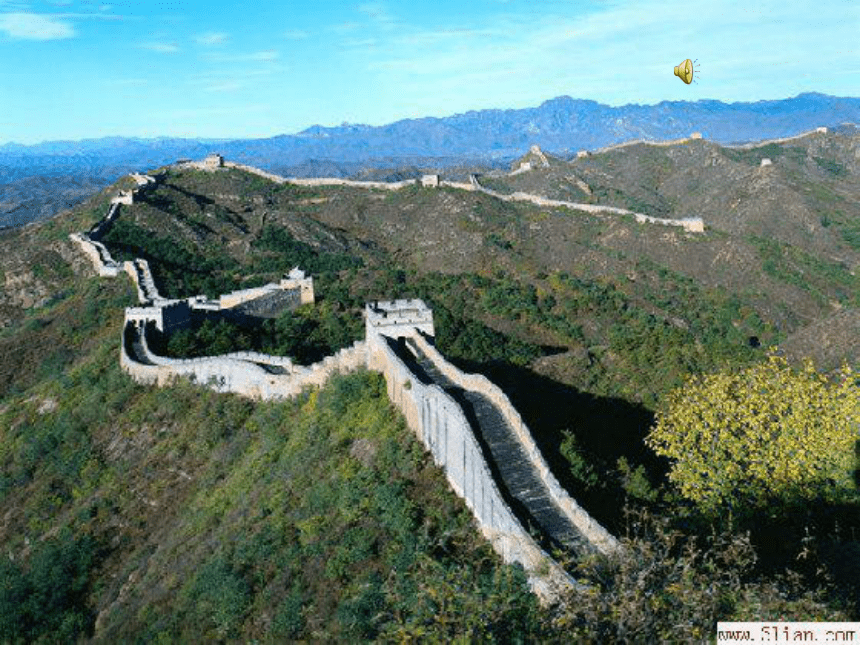 | |
| 格式 | zip | ||
| 文件大小 | 3.1MB | ||
| 资源类型 | 教案 | ||
| 版本资源 | 外研版 | ||
| 科目 | 英语 | ||
| 更新时间 | 2012-05-18 07:36:49 | ||
图片预览

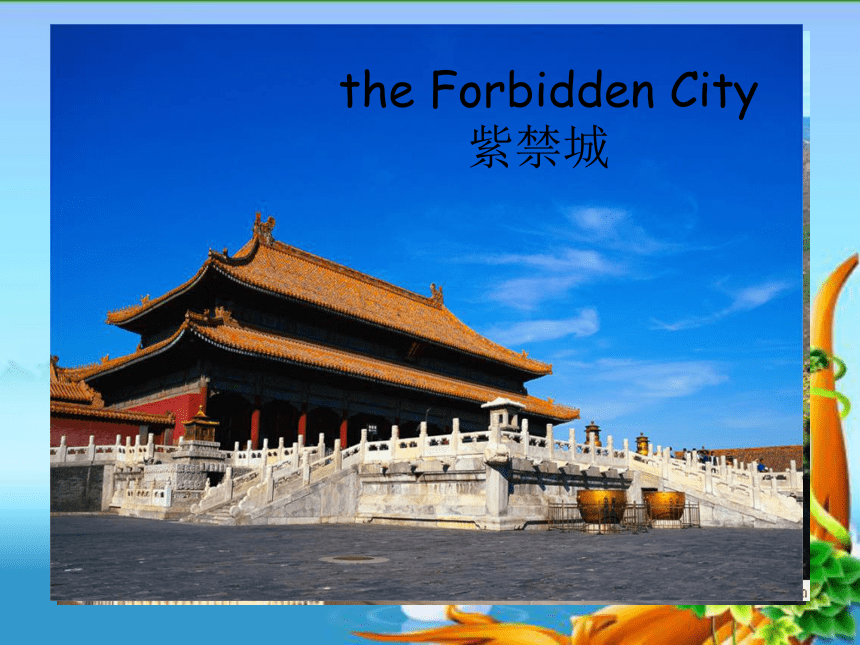
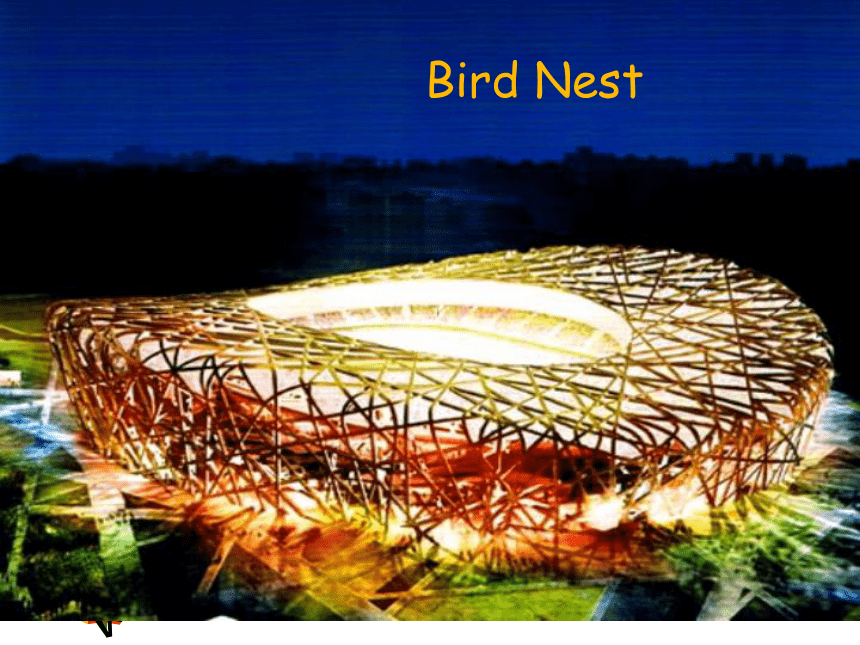

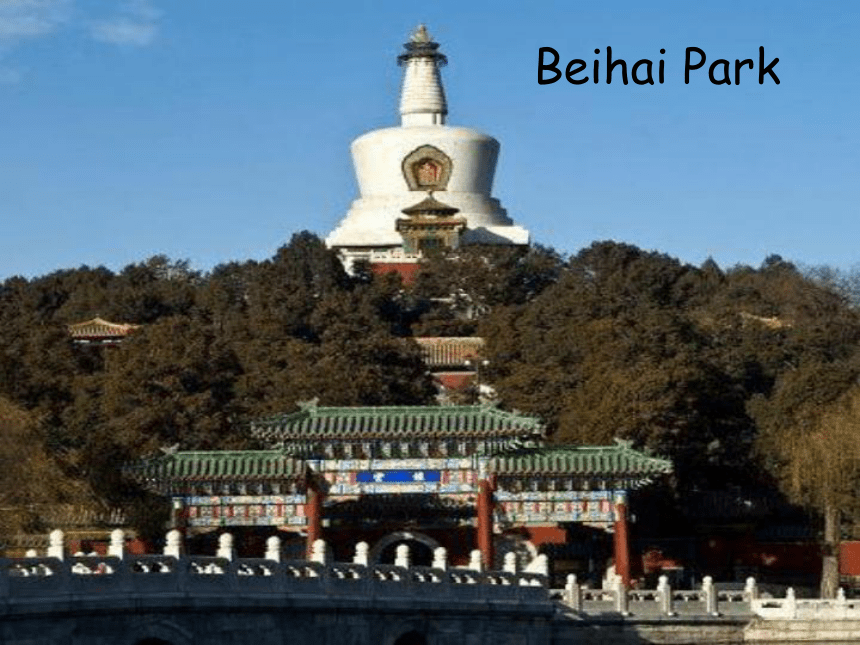
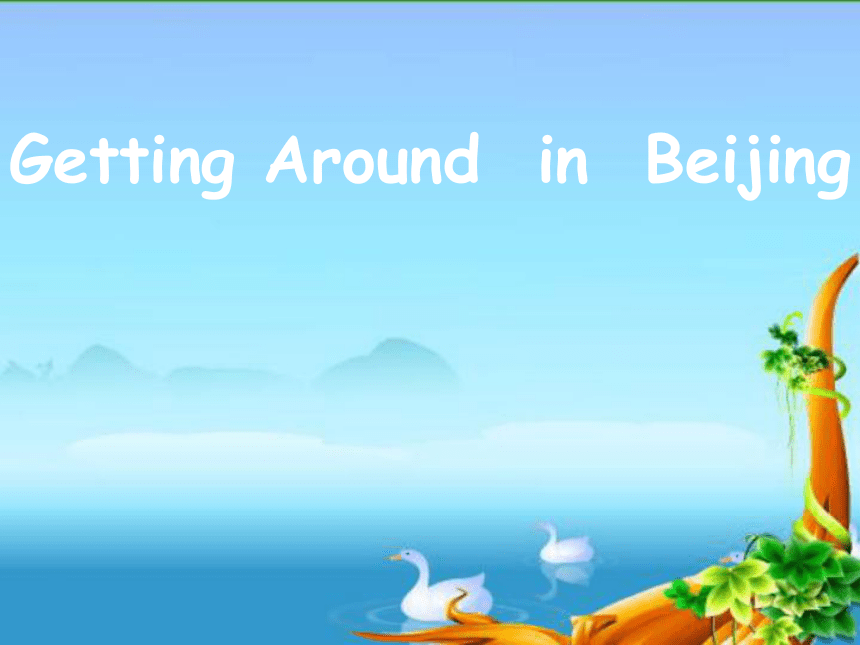
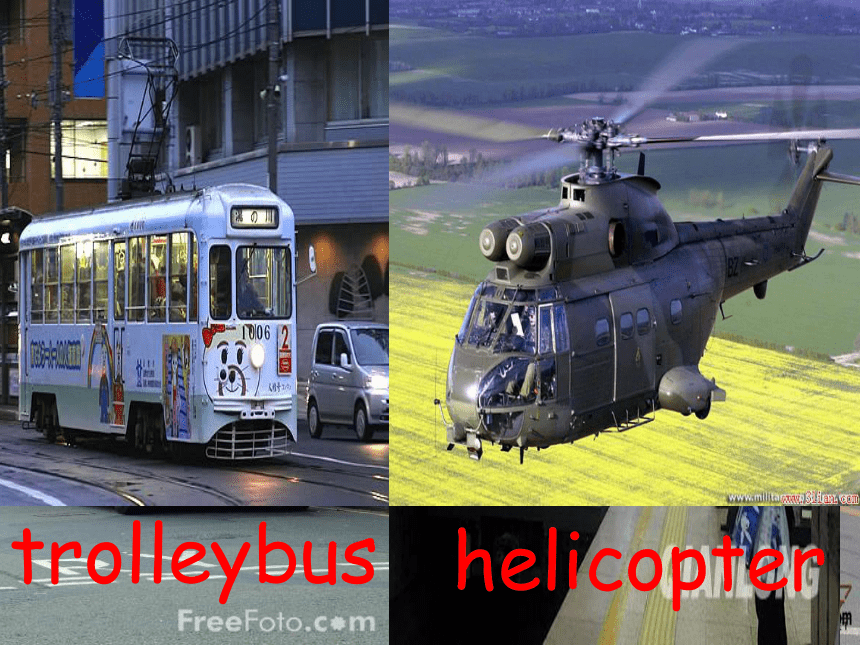
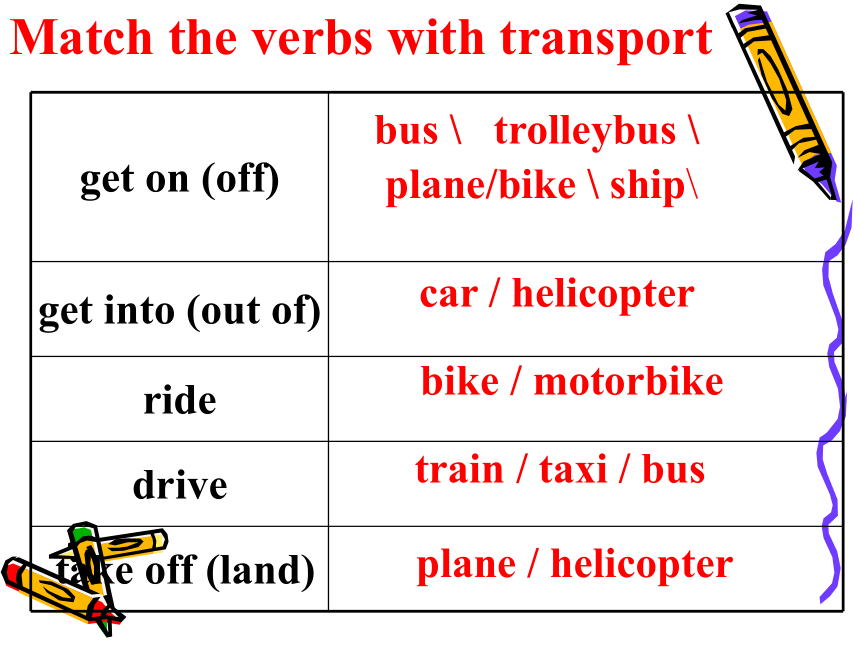
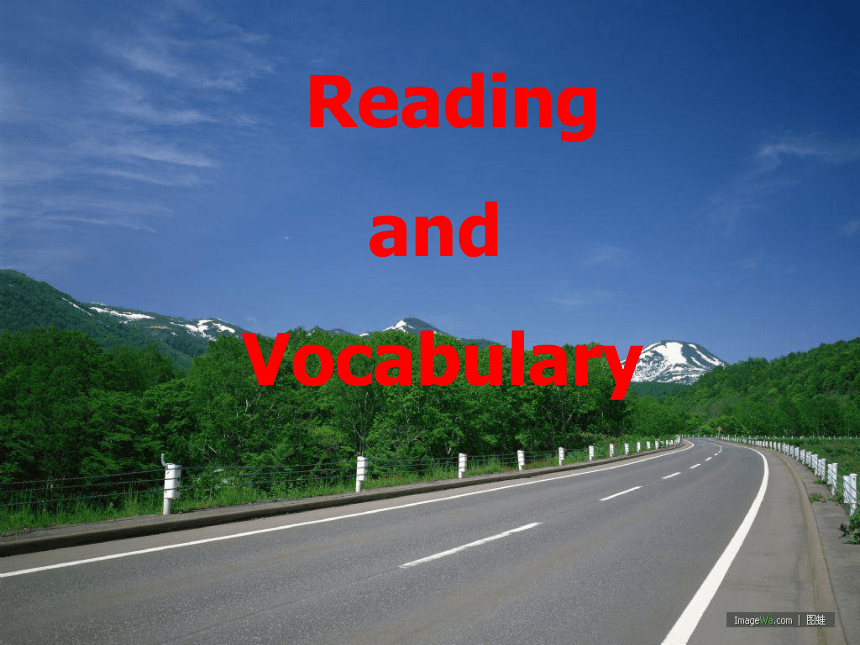
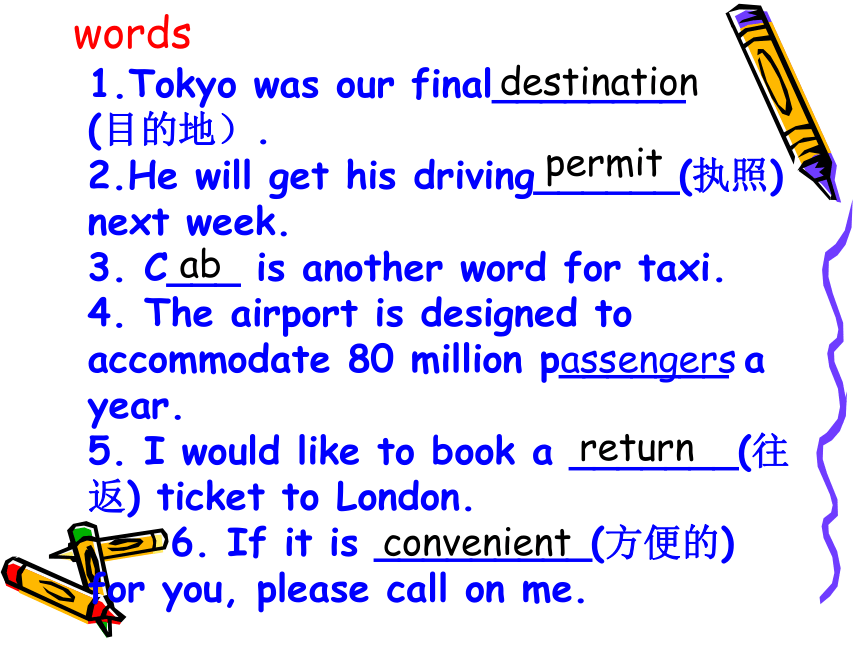
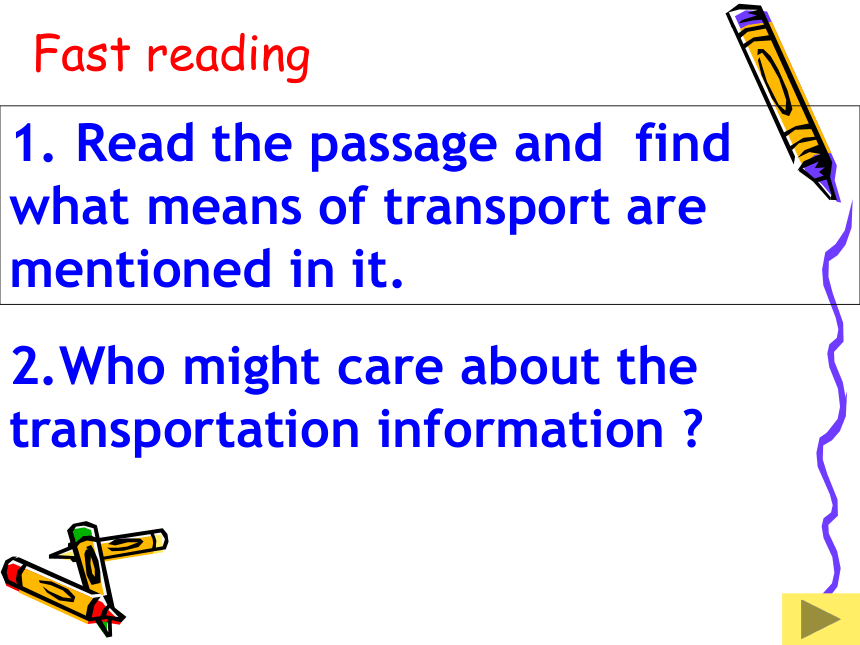
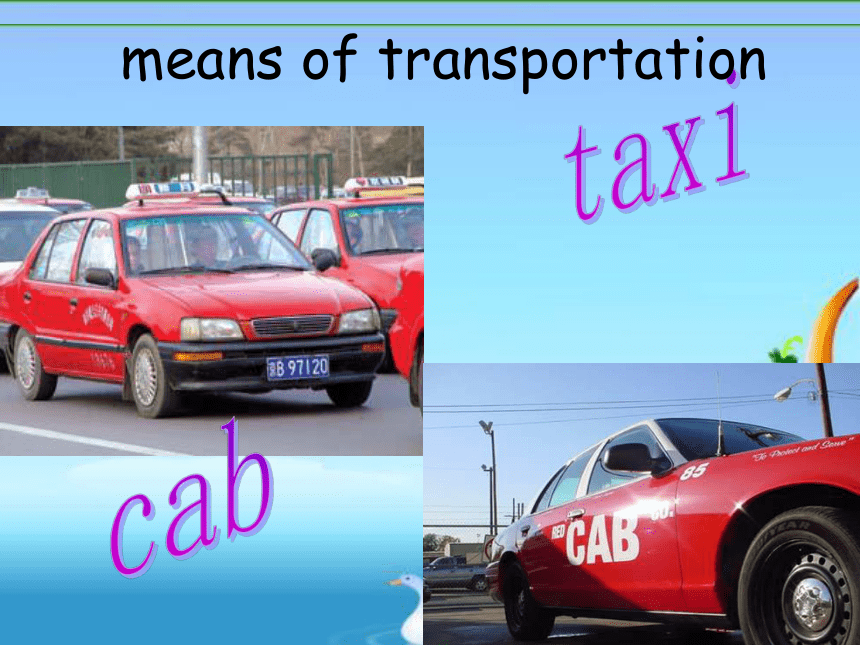
文档简介
(共32张PPT)
the Forbidden City
紫禁城
Bird Nest
Water Cube
Beihai Park
Getting Around in Beijing
trolleybus
helicopter
get on (off)
get into (out of)
ride
drive
take off (land)
bus \ trolleybus \
plane/bike \ ship\
car / helicopter
bike / motorbike
train / taxi / bus
plane / helicopter
Match the verbs with transport
Reading
and
Vocabulary
1.Tokyo was our final________
(目的地).
2.He will get his driving______(执照)
next week.
3. C___ is another word for taxi.
4. The airport is designed to accommodate 80 million p_______ a year.
5. I would like to book a _______(往返) ticket to London.
6. If it is _________(方便的) for you, please call on me.
words
destination
permit
ab
assengers
return
convenient
1. Read the passage and find what means of transport are mentioned in it.
Fast reading
2.Who might care about the
transportation information
means of transportation
Minibuses
the underground (train) (B.E)
the subway (train) (A.E)
the tube (inf.)
pedicab
Who might care about the transportation information
Tourists in Beijing
Answer the following questions
1. If you want to explore the narrow alleys of old Beijing, you should choose__________
taxis B. minibuses
C. pedicabs D. underground
2. The rush hours include _________
A. 5:30----8:00 in the morning
B. 4:00----5:30 in the afternoon
C. 6:30 am----8:00 am and 5:00pm----6:30pm
D. 8:00 am----9:00 am
3. Tourists shouldn’t miss the 103 bus because_________
A. The fare is cheap, at 1 yuan
B. You always get a seat even in rush hours
C. It is fast and convenient
D. It offers one of the most impressive routes
4. When you take a taxi in Beijing, you should________
A. Bargain with the driver
B. Define the price per kilometer
C. Talk to the driver
D. Check the business permit and ask
for a receipt
means of transportatin Time limits advantages disadvantages
cabs
Buses/trolleybuses
minibuses
underground
pedicabs
Ⅲ complete the table
24 hours a day
fast ;
convenient
expensive
From 5 am to midnight
cheap
crowded
have a seat for everyone
more expensive
From 5 am to 11 pm
fast; convenient
crowded during rush hours
Useful for
exploring the
narrow alleys
expensive
Retell and compare two means of
Transport, for example:
Buses are …… while taxis ……..
Taxis are…. While….
1.You’d better do……
2.You should/could do……
3.Why (do) not (you) do……
4.It is a good idea to……
5.I advise you to do……
6.How/what about doing……
Find some tips that the writer gives to visitors in Para. 1, 2
1.You should check the cab has a business permit……
2. It is a good idea to avoid public transport during the rush hour.
3.Tourists shouldn’t miss the 103 bus which offers …..
Student A is a tourist and is wondering how to get around in Beijing.
Students B and C are natives of Beijing and are introducing the means of transport in Beijing to A.
(Using how to make suggestions)
Discussion
A: Excuse me, could you tell me how to get to…..
B: You’ better take a taxi because …….
A: That is a good idea. But is there another choice ……..
C: You should….
………..
A: Thanks.
B.C:
李
李
cab; destination; fare; get around; passenger; permit (n.); receipt; return (n.); route; rush hour; seat; single (n.)
Match the words in the box with their meanings.
1.to go from one place to another:
2.a person who uses public transport:
3.a ticket for a two-way journey:
4.the road the public transport service uses regularly:
5.the busiest time of day:
6.the price of a ticket:
7.a ticket for a one-way journey:
8.the place you want to go to:
9.a document which shows you have paid for something
10.a place to sit:
11.another word for taxi:
12.a document which gives you the right to do
something:
get around
passenger
return
rush hour
fare
single
destination
receipt
seat
permit
_route
cab
Make up a dialogue :
A visitor wants to visit places of interest in Beijing, such as the Bird Nest, the Forbidden City …….
You can give some suggestions
using the box.
the Forbidden City
紫禁城
Bird Nest
Water Cube
Beihai Park
Getting Around in Beijing
trolleybus
helicopter
get on (off)
get into (out of)
ride
drive
take off (land)
bus \ trolleybus \
plane/bike \ ship\
car / helicopter
bike / motorbike
train / taxi / bus
plane / helicopter
Match the verbs with transport
Reading
and
Vocabulary
1.Tokyo was our final________
(目的地).
2.He will get his driving______(执照)
next week.
3. C___ is another word for taxi.
4. The airport is designed to accommodate 80 million p_______ a year.
5. I would like to book a _______(往返) ticket to London.
6. If it is _________(方便的) for you, please call on me.
words
destination
permit
ab
assengers
return
convenient
1. Read the passage and find what means of transport are mentioned in it.
Fast reading
2.Who might care about the
transportation information
means of transportation
Minibuses
the underground (train) (B.E)
the subway (train) (A.E)
the tube (inf.)
pedicab
Who might care about the transportation information
Tourists in Beijing
Answer the following questions
1. If you want to explore the narrow alleys of old Beijing, you should choose__________
taxis B. minibuses
C. pedicabs D. underground
2. The rush hours include _________
A. 5:30----8:00 in the morning
B. 4:00----5:30 in the afternoon
C. 6:30 am----8:00 am and 5:00pm----6:30pm
D. 8:00 am----9:00 am
3. Tourists shouldn’t miss the 103 bus because_________
A. The fare is cheap, at 1 yuan
B. You always get a seat even in rush hours
C. It is fast and convenient
D. It offers one of the most impressive routes
4. When you take a taxi in Beijing, you should________
A. Bargain with the driver
B. Define the price per kilometer
C. Talk to the driver
D. Check the business permit and ask
for a receipt
means of transportatin Time limits advantages disadvantages
cabs
Buses/trolleybuses
minibuses
underground
pedicabs
Ⅲ complete the table
24 hours a day
fast ;
convenient
expensive
From 5 am to midnight
cheap
crowded
have a seat for everyone
more expensive
From 5 am to 11 pm
fast; convenient
crowded during rush hours
Useful for
exploring the
narrow alleys
expensive
Retell and compare two means of
Transport, for example:
Buses are …… while taxis ……..
Taxis are…. While….
1.You’d better do……
2.You should/could do……
3.Why (do) not (you) do……
4.It is a good idea to……
5.I advise you to do……
6.How/what about doing……
Find some tips that the writer gives to visitors in Para. 1, 2
1.You should check the cab has a business permit……
2. It is a good idea to avoid public transport during the rush hour.
3.Tourists shouldn’t miss the 103 bus which offers …..
Student A is a tourist and is wondering how to get around in Beijing.
Students B and C are natives of Beijing and are introducing the means of transport in Beijing to A.
(Using how to make suggestions)
Discussion
A: Excuse me, could you tell me how to get to…..
B: You’ better take a taxi because …….
A: That is a good idea. But is there another choice ……..
C: You should….
………..
A: Thanks.
B.C:
李
李
cab; destination; fare; get around; passenger; permit (n.); receipt; return (n.); route; rush hour; seat; single (n.)
Match the words in the box with their meanings.
1.to go from one place to another:
2.a person who uses public transport:
3.a ticket for a two-way journey:
4.the road the public transport service uses regularly:
5.the busiest time of day:
6.the price of a ticket:
7.a ticket for a one-way journey:
8.the place you want to go to:
9.a document which shows you have paid for something
10.a place to sit:
11.another word for taxi:
12.a document which gives you the right to do
something:
get around
passenger
return
rush hour
fare
single
destination
receipt
seat
permit
_route
cab
Make up a dialogue :
A visitor wants to visit places of interest in Beijing, such as the Bird Nest, the Forbidden City …….
You can give some suggestions
using the box.
